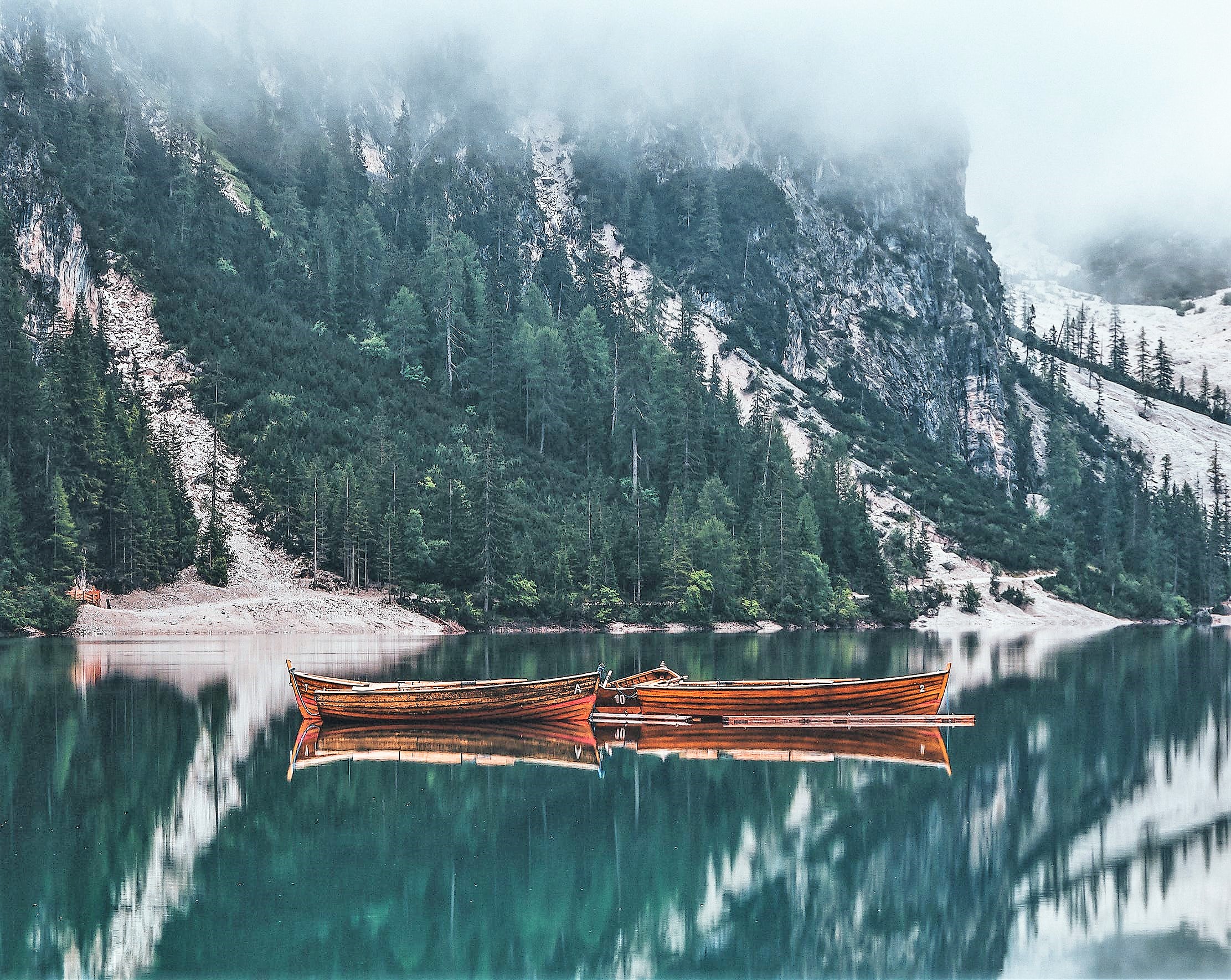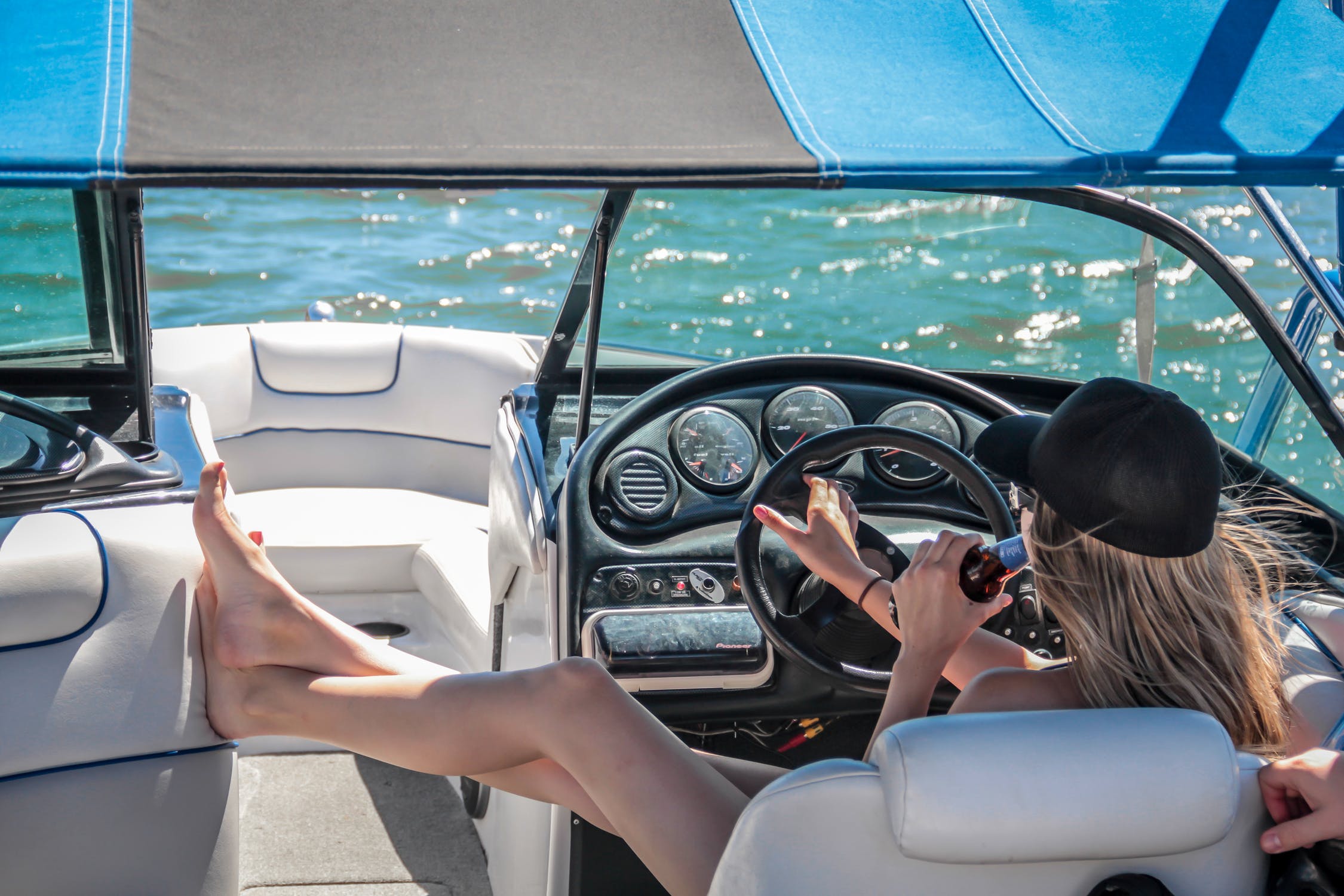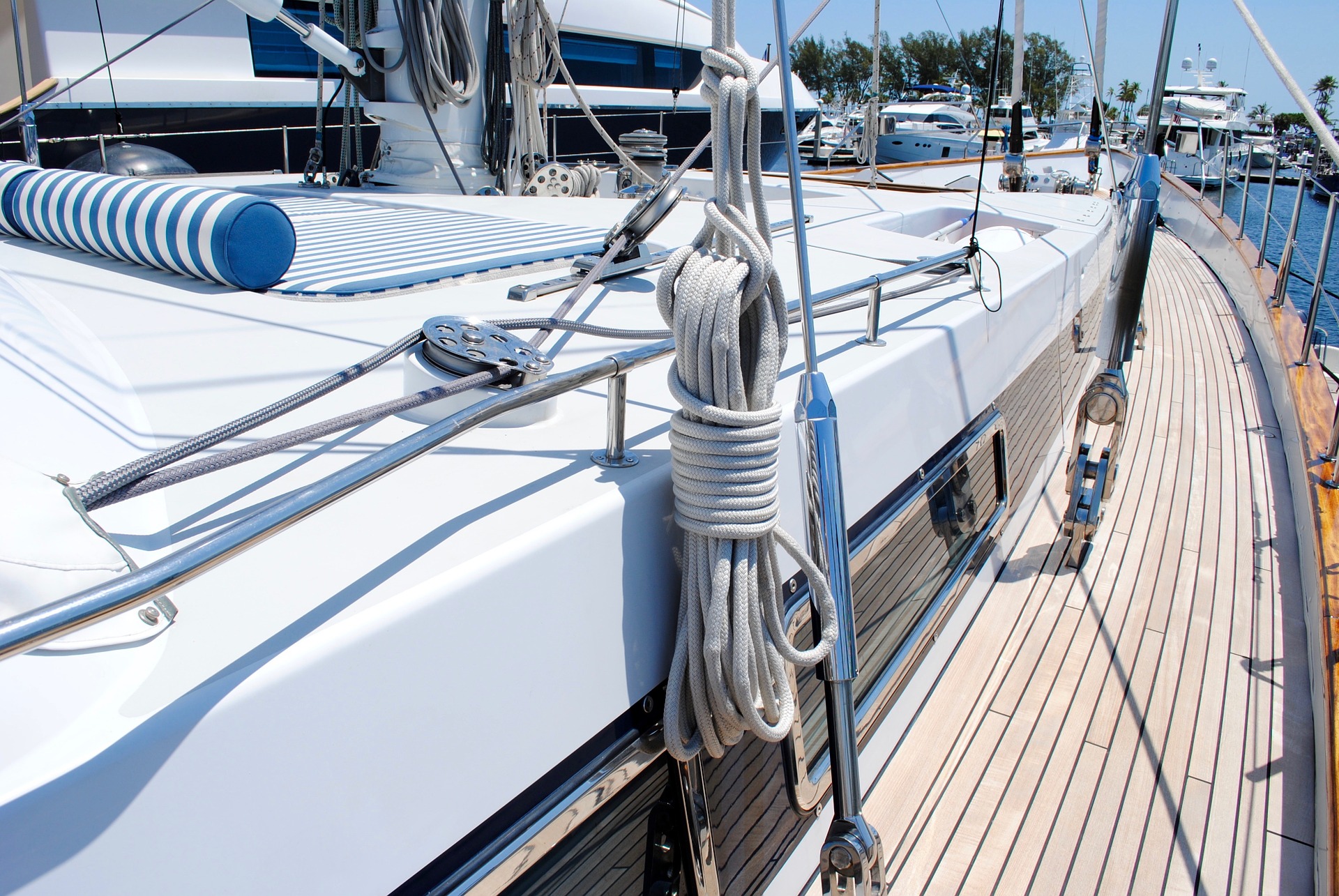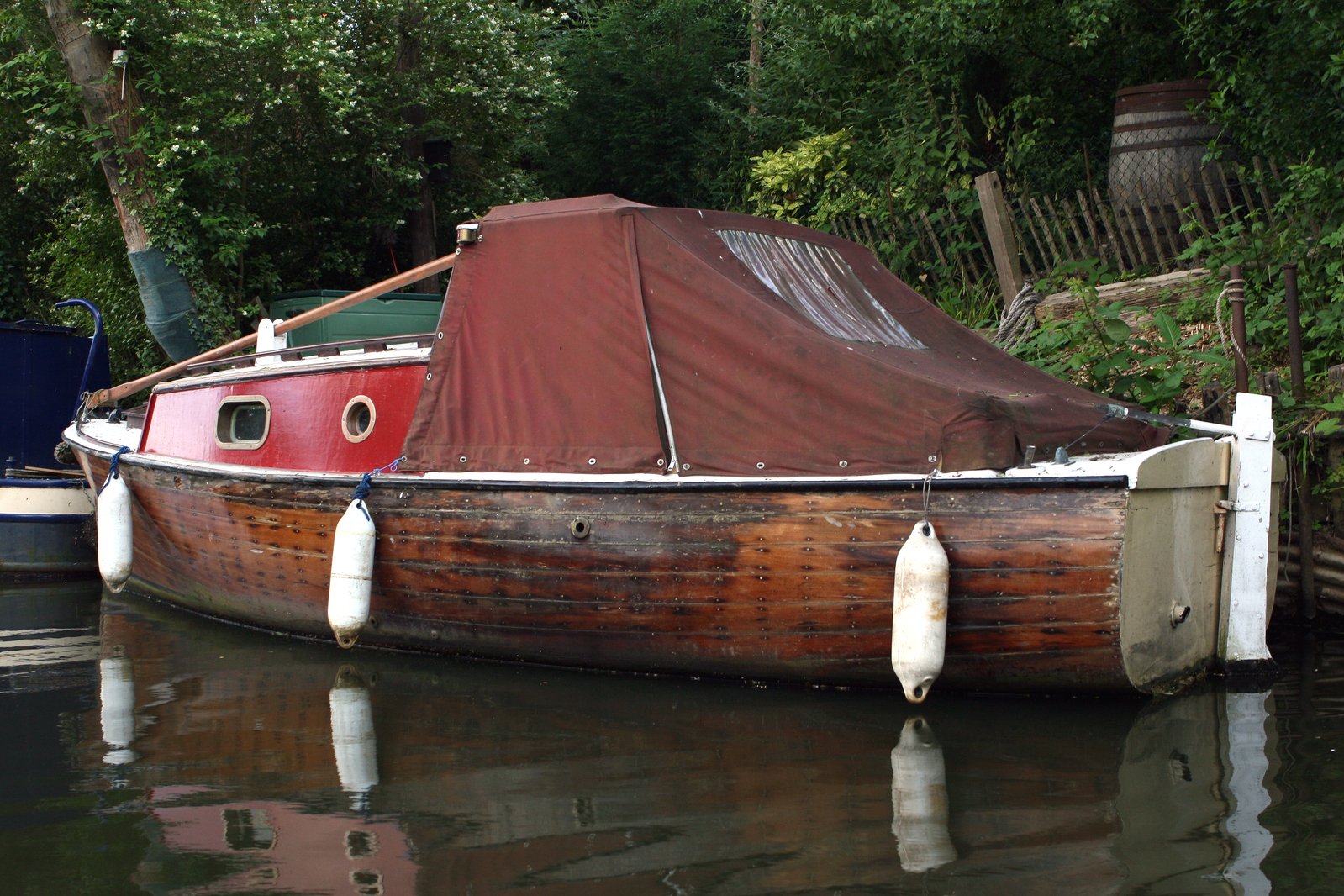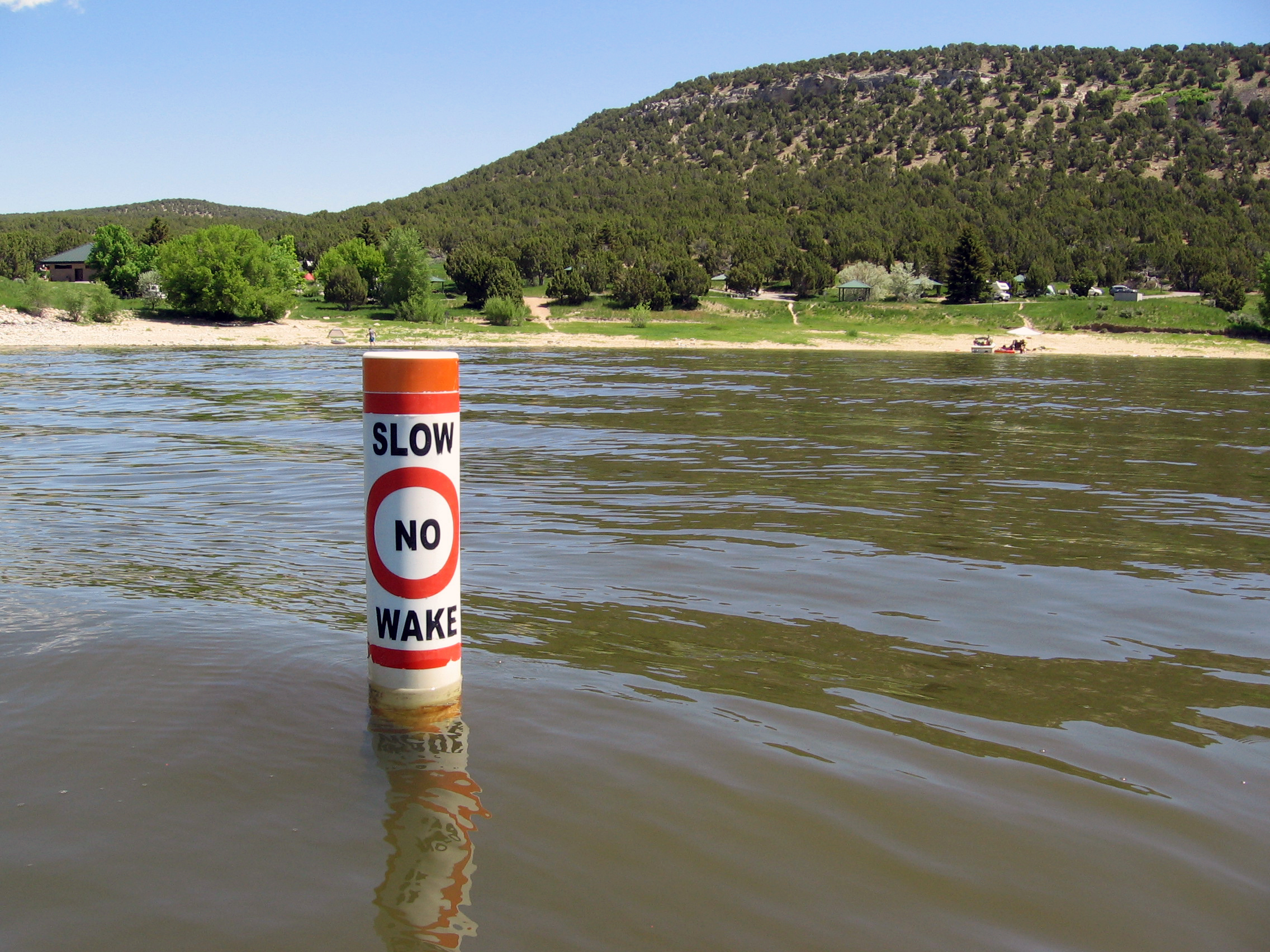
Have you ever seen a “No-wake zone” sign while boating? Of course, I expect you to be familiar with this sign and follow this rule. But have you ever wondered what’s its purpose is and how important it is?
In this article, we’ll discuss how a “no-wake zone” sign can prevent boating accidents, what’s the right speed when slowing down, and what could be the penalty for it.
WHAT IS A WAKE?
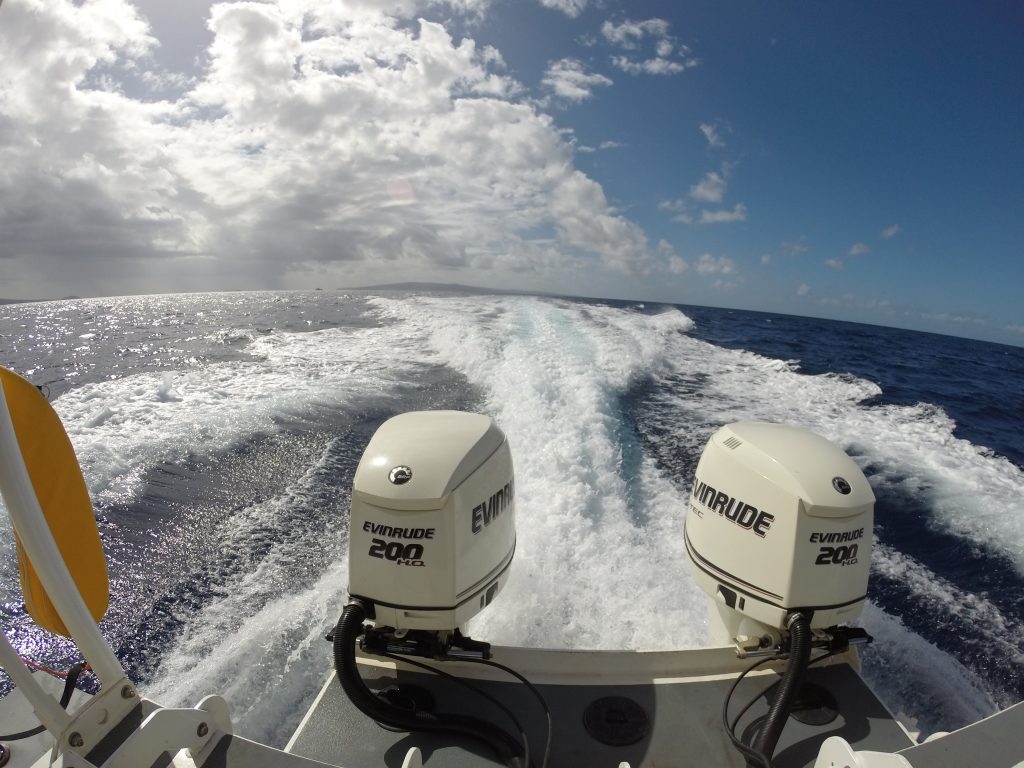
Before going through the rules and regulations, let’s first discuss what a wake is.
Wake is the wave that is created as a boat travels through the water. It may seem harmless but note that it’s considered one of the primary contributing factors of boat accidents.
Since wake carries force and energy, it can cause damage and can be dangerous for people on the docks. The United States Coast Guard recorded a total of 140 accidents, 117 injuries, and 12 deaths caused by the force of wave/wake on their 2019 Recreational Boating Statistic report
WHAT IS THE PURPOSE OF THE NO-WAKE ZONE?
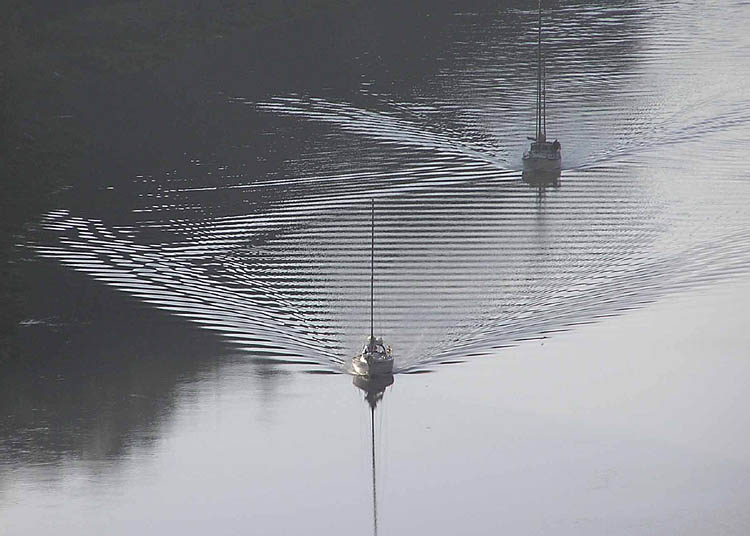
The main purpose of the no-wake zone is to make every vessel slow down or idle to minimize the wake. It’s similar to the school zone or speed bumps that can be seen on the road.
Why slow down? Simply to decrease the wave energy hitting the shoreline especially on shallow areas of lakes and rivers. As mentioned earlier, wake carries a force that can rock other boats and throw off passengers’ balance that can cause accidents. Another purpose of “no-wake zones” is to reduce the impact on water clarity.
Water clarity is important in the aquatic ecosystem because it affects the depth of water where aquatic plants grow, the ability of fishes to find food, water temperature, and oxygen content. In short, it can affect the overall recreational use of a waterbody.
Boats affect the water clarity since boat propellers can directly disturb the bottom of the water or may produce turbulence, especially in shallow water. These factors can increase the number of sediment particles that are an important element for algal growth. Lastly, boat wakes can cause shoreline erosion that can cloud the water.
WHERE CAN YOU SEE THE NO-WAKE ZONE SIGNS?
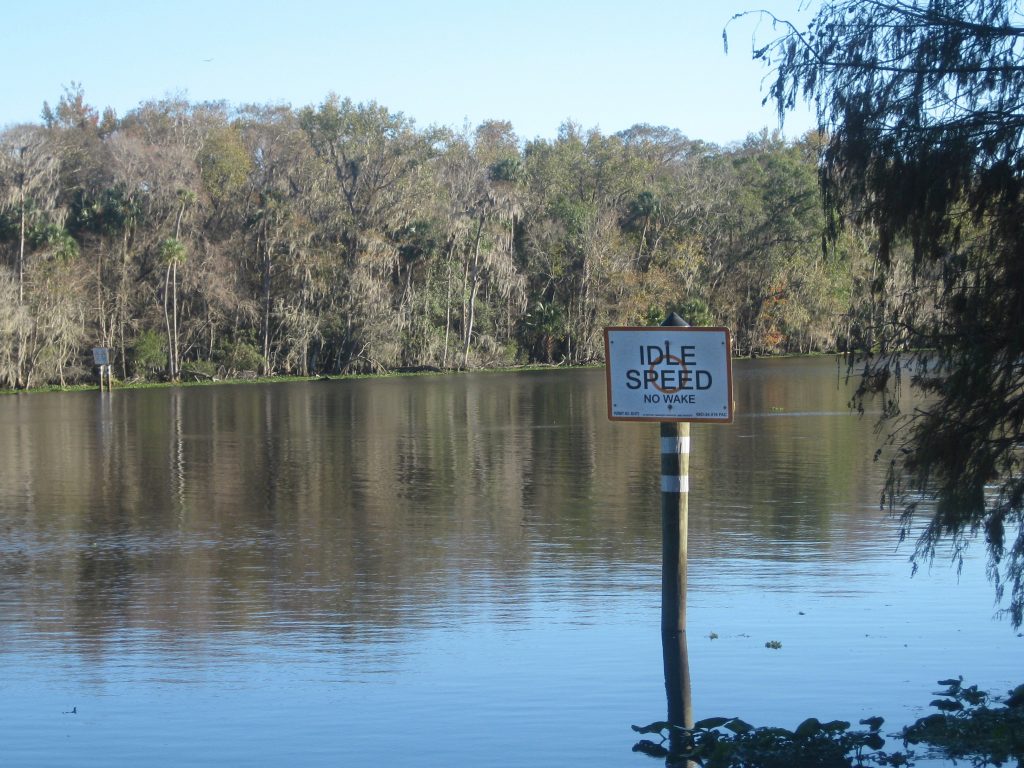
Usually, no-wake zone signs are seen near docks, residential areas, or slipway where boats are launched to ensure the public’s safety.
People who own waterfront properties can also benefit from the no-wake zone sign since it decreases the wave energy hitting their shoreline and prevents erosion on unprotected seaboards.
In fact, most waterfront property owners install shoreline protection like bulkhead and seawall that can temporarily protect their land from wake destruction.
WHAT IS THE MAXIMUM SPEED AND DISTANCE FOR NO-WAKE ZONES?
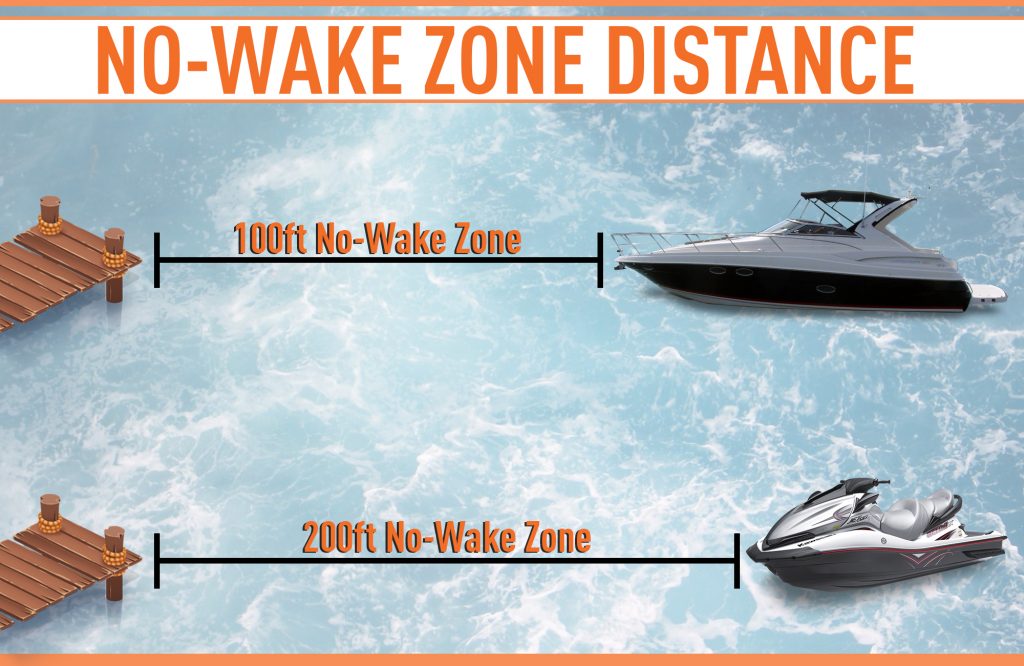
Speed
When going through a no-wake zone, you’re required to slow down and idle your boat or maintain a speed that will not exceed 5 MPH. This will automatically minimize the boat wake and prevent the huge force of waves.
Distance
When it comes to distance, there are two rules that you need to follow:
- 100-foot rule – If you’re driving a motorboat on a no-wake zone, you have to limit your speed when within 100 feet of the restricted area and shoreline.
- 200-foot rule – If you’re operating any personal watercraft on a no-wake zone, it is required to limit your speed when within 200 feet of the shoreline.
WHAT ARE THE “NO WAKE ZONE” PENALTIES?
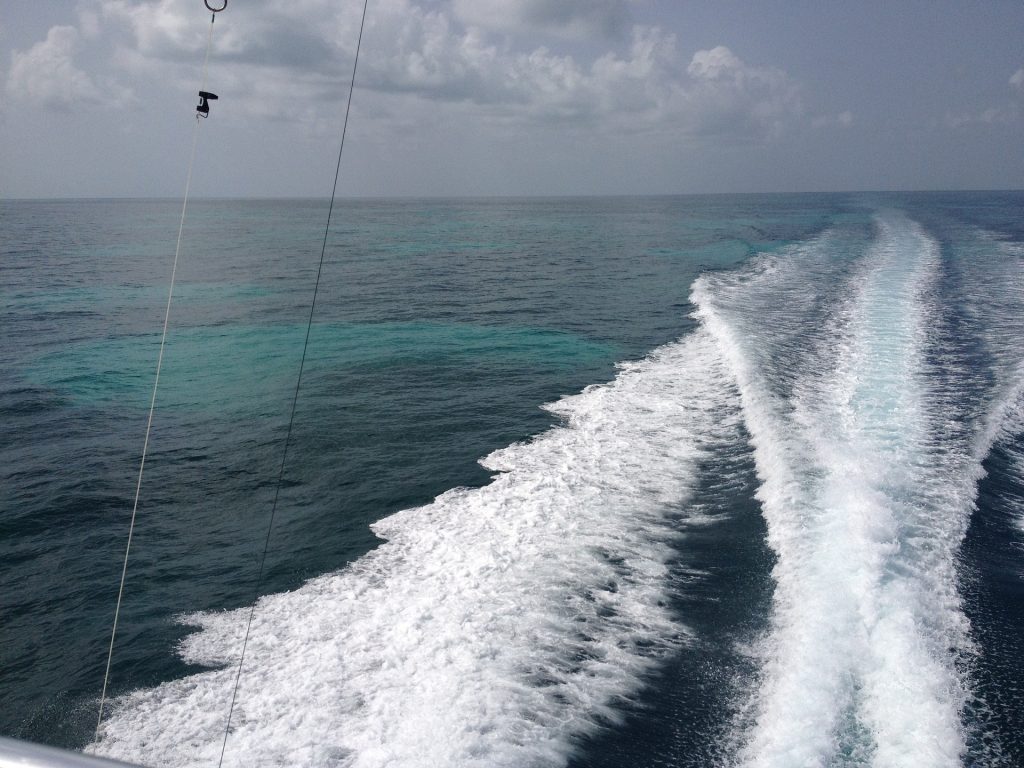
There are different no-wake zone penalties in every state. For example, Arizona considers no-wake zone violations as a misdemeanor (lesser criminal act) but it has a maximum fine of $2500 plus 83% surcharge and six months in jail.
While in South Carolina, violators are fined not less than $50 and not more than $200 or imprisoned not more than thirty days for each violation. Besides this, violators are required to attend and complete a boating safety education program approved by the department. Violators will also be suspended from operating water vessels within the state until successful completion of the required class.
CONCLUSION
Following the no-wake zone will not only prevent boat accidents but will also save the aquatic ecosystem. And even if violating it is considered a misdemeanor, all boaters should be responsible enough to follow and respect the rules and regulations that are implemented in each state.
What are your no-wake zone tips? Share your thoughts and comment below.
